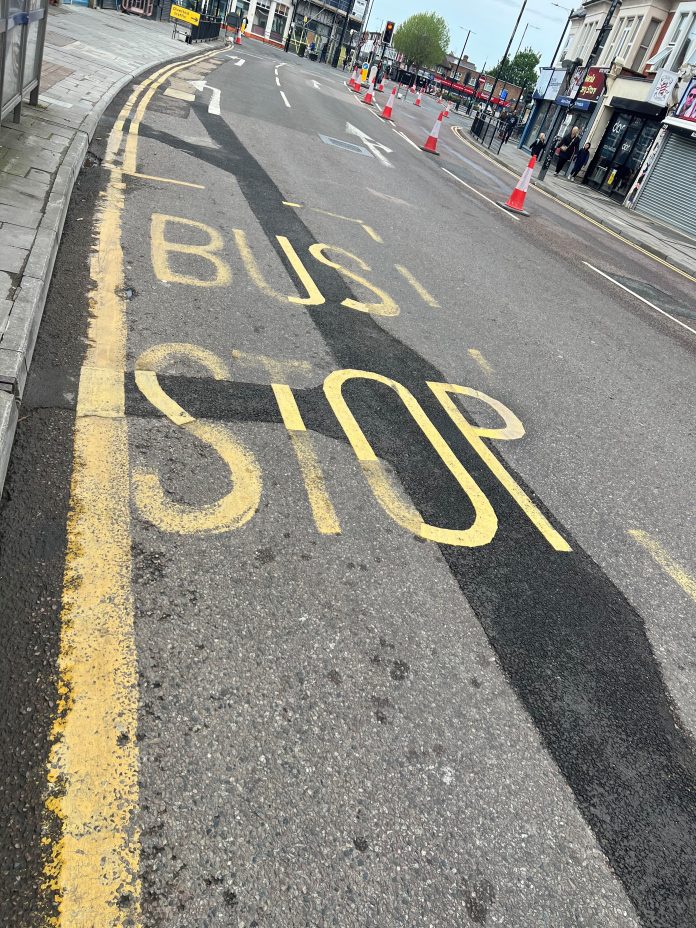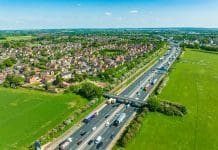Neil Thompson, chair of the IET’s Built Environment Panel, explains the role infrastructure technology can play in helping to fix high streets and roads that have been dug up (and re-dug up) across UK towns and cities
As I walk my son to school, we pass through a 19th-century high street that was described in a recent article as once the “Bond Street” of my local area. Despite newly awarded conservation area status, the patchwork of concrete and asphalt that has been left in the wake of our efforts to update our ageing infrastructure technology is a source of great frustration for me. The uneven surfaces and an ugly aesthetic from a cacophony of construction materials contribute to the “broken window effect” that haunts our high streets and surrounding streets.
The broken window theory suggests that visible signs of disorder (as the name suggests, broken windows, litter and crumbling infrastructure) can lead to an increase in antisocial behaviour and crime. I would argue that our roads and pavements are a public good or service, like influential economist Ronald H Coase’s lighthouses, and should be treated as such.
What I mean here is our roads and paths are public services. They transport people, goods and services and are a conduit for other types of infrastructure like telecommunications, water, gas etc. They are systemic in nature and require a deeper level of respect from all those that affect them.
I use the image found alongside this article in many of my lectures in economics as an example of the poor design of incentives and a failure in procurement processes found in the construction sector. The replacement of road markings feels like a cruel practical joke, and I do not find it funny.
But why does it bother me so much?
My view is that there are two fundamental failings.
- The failure of the buyer. Too much focus on a “tight scope” of the supply chain (probably caused by historical poor behaviours of suppliers). It also fails to coordinate work and tends to dig up freshly resurfaced roads and compounding the problem. The buyer is focused on the transaction of a narrow problem. Not the systemic nature of the public good they are intervening in and ultimately supposed to be investing in.
- The failure of the supplier. The supplier is incentivised negatively in two ways. First is a focus on cost over quality. We have time, quality and cost and you generally can only optimise two of them at once. We tend to see suppliers deliver as “fast” and as cheaply as they can. Second is in terms of scope: they will only do precisely what has been instructed of them. Hence why we see only partial fixes of road markings.
What are the main factors contributing to the failure of delivering road repairs?
Just doing what we have been asked to do: The profession of project management limits itself through establishing and maintaining “scope”. Of course, we need to make sure projects are kept on track. However, our obligations as professionals in the built environment should not be using the scope as an excuse to justify poor outcomes. Let’s ask ourselves, is this right? Will this lead to a desirable outcome? (e.g. the broken window effect) We must develop a better dialogue with our customers.
Failing to systemise outcomes: For both buyers and suppliers, we need deeper planning and connectivity of our projects. This is not easy at the scale of local government. We have seen at the mega-scale the creation of Project 13 (an initiative from the Infrastructure Clients Group to mature procurement practice for large-scale projects), and we need the same at the local level. We rely heavily on procurement and project management professionals to design and execute contracts in a way that delivers ‘real’ outcomes, not just the outputs of a transaction.
Failing to recognise the essence of public good: In this context, it seems we have forgotten that these surfaces are for the safe passage of people. At one end are pedestrians, including those that have mobility issues. The other end is transportation, where potholes and uneven surfaces cause increased wear and tear on relatively expensive assets. This function seems secondary to the utilities that lay underneath them, as our roads and pavements are pulled apart so regularly. Not to mention the air quality outcomes of congestion caused by the disruption caused.
How can infrastructure technology improve the management of roads?
- Let’s improve the transaction costs of delivery and asset management. This is where infrastructure technology comes in. Connection and/or centralisation of data is vital. This enables more efficient information management, which can lead to better decision making and planning/simulation. An example of this is the National Underground Asset Register (NUAR),a programme that is delivering a register of the assets that lay under our pavements and roads.
- Let’s improve professional practice. This is both people and process. We need the learning from experience with mega projects (such as Project 13) to extend into “mega project thinking” for local government. In Bent Flybvbjerg’s most recent book, How Big Things Get Done, he provides everything we need to understand the human factors of planning complex infrastructure.
- Let’s empathise. Our local infrastructure is a big thing and should be treated and respected as such. Our high streets are a nexus of every single type of infrastructure, and they need to be coordinated in a systemic way.
This can only be achieved through the use of data and infrastructure technology to drive an evidence-based approach to decision making, and ultimately foresting richer relationships with our customers, suppliers and end users.
This is my motivation as chair of the Built Environment Policy & Insight Panel at the IET. The future of engineering is in delivering a system of outcomes and navigating the interdisciplinary nature of complex infrastructure.
Making this happen requires leadership and deeper conversations about what is our acceptable standard for public goods and services in collaboration with the government, industry and the public, our ultimate customers.
Neil Thompson
Chair, Built Environment Panel
Institution of Engineering & Technology
Tel: +44 (0)1438 313 311














